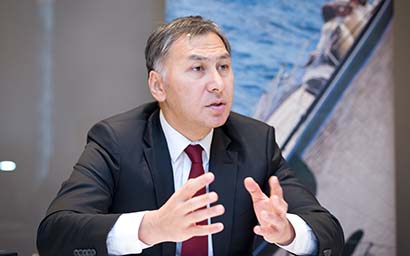A holistic approach to information sharing and analysis flips the script on emerging market investment strategies.
Emerging markets (EM) have gained traction in investors’ strategic asset allocation in recent years, and despite being subject to phases of regional turbulence, the asset class can no longer be overlooked.
With asset allocations being revisited, so should the traditional EM perspective. Investors should move away from “asset class” considerations to a more selective approach to capture country, sector or even company-specific stories in EM.
Investors should particularly rely on a strong understanding of the macroeconomic backdrop of each country to not only identify opportunities, but also to avoid areas where political risks match poor fundamentals.
Integrating research and investment expertise
Beyond macroeconomic fundamentals, developing an emerging markets’ stance benefits from integrating bottom-up research across asset classes, which provides ideas on the sectors best positioned to gain from specific reforms or growth dynamics.
The case of Mexico is compelling. In 2016, many asset managers were high on Mexico as an up-and-coming EM star with recommendations to buy the peso or Mexican equities. Investors were told they did not want to miss out on the growth story.
But there might have been another side to the story. Amundi Emerging Markets’ views did not follow the general Mexican growth consensus, as Mexican companies’ earnings structure and prospects, both from the fixed income and equity standpoints, did not seem to corroborate the widely accepted Mexican call. This view was rewarded when in 2016, Mexico’s GDP dropped to its lowest since 2010.
“We didn’t see any short-term growth in earnings and could not see it driving GDP growth,” says Yerlan Syzdykov, Global Head of Emerging Markets at Amundi (pictured). “In this situation, our bottom-up view helped us formulate a top-down approach.”
The Emerging Markets Continuum
Accessing EM requires deep knowledge across what Syzdykov refers to as the “emerging markets continuum”, which goes beyond the traditional “asset classes” perspective to integrate regional, country, industry or even company-specific stories across both equity and fixed income.
And for the story to unfold, the appropriate organisation must be set up. “Implementing the ‘emerging markets continuum’ calls for a unique organisational set-up, coordinated under a Global Head of Research for Emerging Markets combining both credit and equity research one”, says Syzdykov. “It fosters in-depth insights into the capital structure of a specific company, industry or even country. When complemented by analysts’ in-the-field knowledge acquired during meetings with CEOs and local actors, we get a local perspective for the domestic state of play. This integrated approach enables us to identify the most valuable areas and uncover opportunities in phases of market disruption.”
He adds: “Macro views are difficult to translate into valuations at times, but if you take the time to share perspectives and see how that translates into effects, you immediately create a lot of interest. It’s an integral part of our investment approach and what sets us apart at Amundi Emerging Markets.”
With 73 investment professionals and €39.5bn of assets under active management, Amundi Emerging Markets applies this unique approach across all asset classes and regions.
This document is not intended for citizens or residents of the United States of America or to any «U.S. Person», as this term is defined in SEC Regulation S under the U.S. Securities Act of 1933. Amundi accepts no liability whatsoever, whether direct or indirect, that may arise from the use of information contained in this material. Amundi can in no way be held responsible for any decision or investment made on the basis of information contained in this material. The information contained in this document is disclosed to you on a confidential basis and shall not be copied, reproduced, modified, translated or distributed without the prior written approval of Amundi, to any third person or entity in any country or jurisdiction which would subject Amundi or any of “the Funds”, to any registration requirements within these jurisdictions or where it might be considered as unlawful. Accordingly, this material is for distribution solely in jurisdictions where permitted and to persons who may receive it without breaching applicable legal or regulatory requirements. The information contained in this document is deemed accurate as at August 2018. Data, opinions and estimates may be changed without notice. Amundi Asset Management, French ‘’Société par actions Simplifiée’’, SAS with a share capital of €1,086,262,605 – Portfolio management company approved by the French Financial Markets Authority (Autorité des Marchés Financiers) – under no.GP 04000036. Head office: 90, boulevard Pasteur, 75015 Paris – France. Postal address: 90, boulevard Pasteur, CS 21564, 75730 Paris Cedex 15 – France. Tel : +33 (0)1 76 33 30 30 – amundi.com – 437 574 452 RCS Paris.
©2018 funds europe





